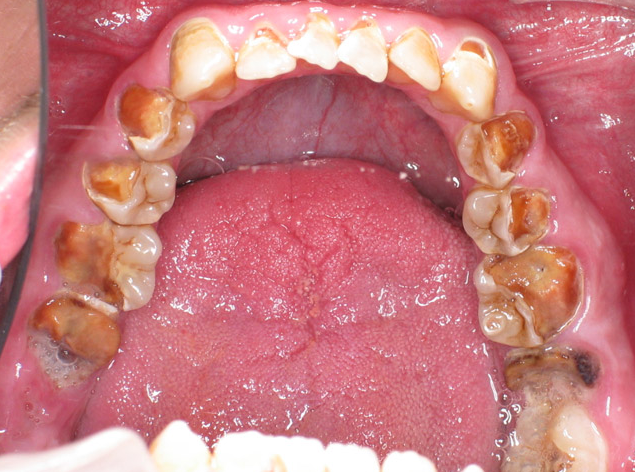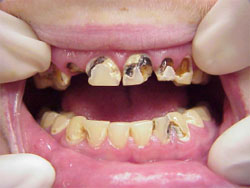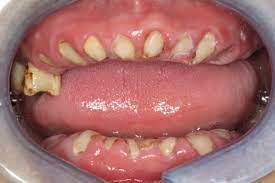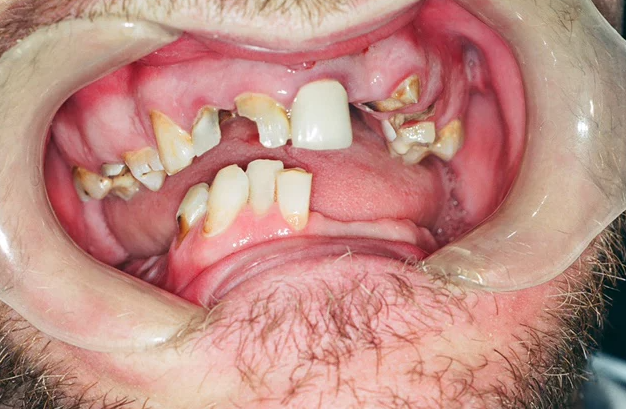What are Meth Sores?
Meth sores, also known as methamphetamine-induced skin lesions, are a visible manifestation of the harmful effects of methamphetamine use on the skin. These sores typically appear as open, painful, and often infected lesions on various body areas, particularly the face, arms, and legs.
Methamphetamine is a highly habit-forming stimulant that can cause intense itching, hallucinations of bugs crawling under the skin (formication), and a compulsive urge to scratch or pick at the skin. This scratching or picking, often accompanied by poor hygiene and skin-picking behaviors, can lead to skin damage and sores.
Meth Face Sores
Meth sores on the face can be a visible sign of drug addiction and may lead to social stigma and isolation. Seeking professional help and treatment is essential to address meth addiction and the associated health effects, including the development of face sores from meth.
Meth Sores on Face Pics Gallery
Meth face sores result from long-term methamphetamine use and can significantly impact a person’s appearance.
Meth facial sores often manifest as open, red, and inflamed wounds on the face, particularly around the mouth, nose, and cheeks. These sores can become infected, resulting in scabs and potentially leaving behind scars.
The DEA (.gov) provides the meth sores pics above to help meth addiction awareness. The “Faces of Meth” project was first presented by the Multnomah County Sheriff’s Office in Portland, Oregon, in 2004. The Pictures of Meth Sores (“Faces of Meth”) project aimed to educate the public, especially young individuals, about the dangers of meth use and its consequences.
Meth Sores in Mouth
Meth mouth sores, known as methamphetamine-induced oral ulcers, result from long-term meth use. These sores typically appear as painful, open wounds or mouth, gums, or tongue ulcers. Methamphetamine use leads to dry mouth, which reduces saliva production and increases the risk of tooth decay, gum disease, and oral sores.
Meth Sores Pictures Gallery
Methamphetamine abuse can lead to reduced blood flow to the mouth, which can cause the tissues to break down and become more susceptible to infection. This can result in painful and persistent sores or ulcers in the mouth.
Methamphetamine use can cause mouth sores or ulcers, a dental problem called “meth mouth.”
Meth sores or ulcers can occur on the tongue, lips, or gums. The sores can vary in size, duration, and pain level.
Meth Mouth Sores on Tongue, Gums, & Lips
Meth tongue sores can be excruciating, making it hard to eat or speak. Meth sores on tongue can also become infected, leading to further complications. Meth mouth sores on the gums may appear as white or red patches and can lead to gum disease if left untreated. Meth mouth sores on the lips usually appear around the edges or corners of the mouth and can also become infected. Meth sore throat can also occur due to the inflammation and discomfort in the throat caused by methamphetamine use.
What Do Meth Sores Look Like?
Meth sores typically present as small, red, or white bumps or ulcers on the skin. They may resemble pimples, blisters, or open sores. Meth sores are often accompanied by inflammation and tenderness in the affected area. The sores can develop into larger, crusted lesions or form scabs in more severe cases. These sores are often a visible sign of the damaging effects of methamphetamine use on the skin and overall health.
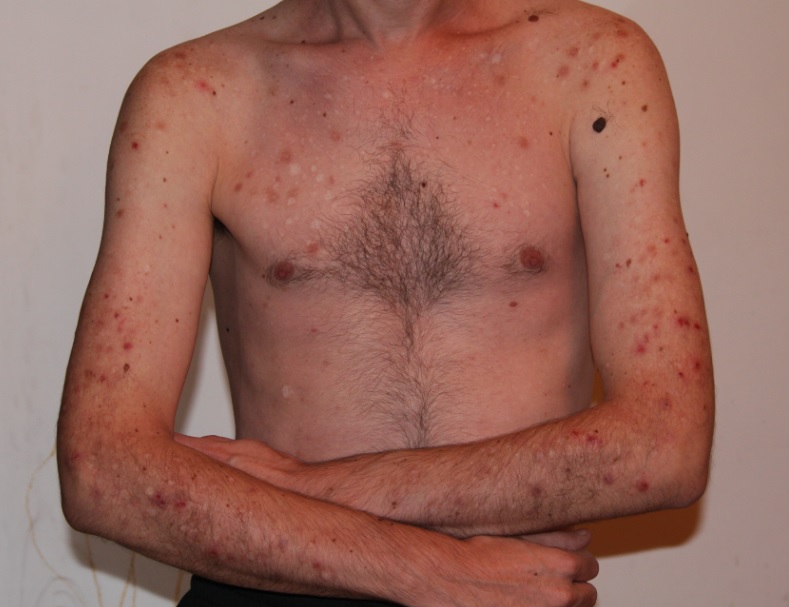
Skip To:
Learn More:
- What Are Meth Bugs, Meth Mites & Meth Sores? Meth Mites Pics. Meth Bugs Pictures. Why Do Meth Bugs & Meth Mites Occur? Meth Bugs & Meth Mites Treatment.
- Frightening Meth Before and After Pictures. Before and After Meth Pictures Show Horrific Devastating Changes. Watch Meth Before and After Shocking Video.
- Shocking Meth Mouth Images, Meth Mouth Pics, Meth Mouth Sores, Meth Teeth, Meth Jaw, Effects, Symptoms, & Treatment
- What is Meth Induced Psychosis, and How Do You Treat It?
- What Does Meth Feel Like? What You Should Know
- What Does Crystal Meth Look Like? Identify Meth Look by Forms, Color, Powder Vs Liquid. What Does Meth Look Like? What Do Methamphetamines Look Like?
- Signs Of Being A High-Functioning Meth Addict
Meth Skin Sores Caused By Meth Mites
“Meth mites” or “meth bugs” is a term used to describe a shared hallucination or delusion experienced by individuals under the influence of methamphetamine. It refers to the sensation of bugs, insects, or parasites crawling on or under the skin.
These sensations are typically a result of the drug’s effects on the central nervous system and are not based on any actual presence of insects. Meth mites are a form of tactile hallucination and can cause intense itching, leading to skin picking or scratching. Seeking professional medical help, including addiction treatment and psychological support, is crucial for addressing the underlying methamphetamine use and managing the associated hallucinations.
Picture of Meth Sores on Legs
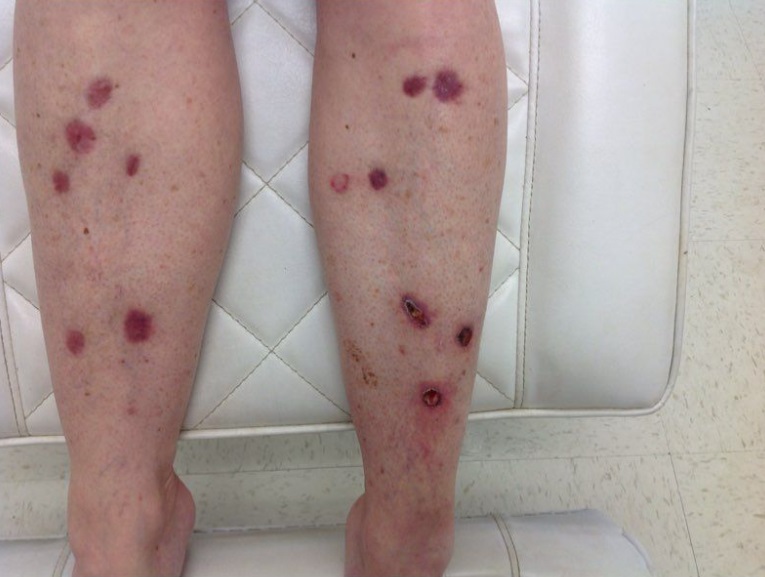
Meth Sores On Skin Infographic
What causes meth sores? Sores from using meth typically appear as open, red, inflamed wounds on the face, arms, legs, or other body areas. Methamphetamine use can cause intense itching, hallucinated sensations of bugs crawling under the skin, and a compulsive urge to pick or scratch at the skin.
Addressing the underlying addiction through professional help and rehabilitation programs is essential for long-term recovery and preventing further damage to the skin.
Embed the below “Meth Face” Infographic to your Website. This meth face infographic is provided by the We Level Up addiction treatment center team. To use the above infographics, you agree to link back and attribute its source and owner at https://welevelup.com/addiction/meth-sores/
Meth Face infographic image link: https://welevelup.com/wp-content/uploads/2023/06/Meth-Sores-2.jpg
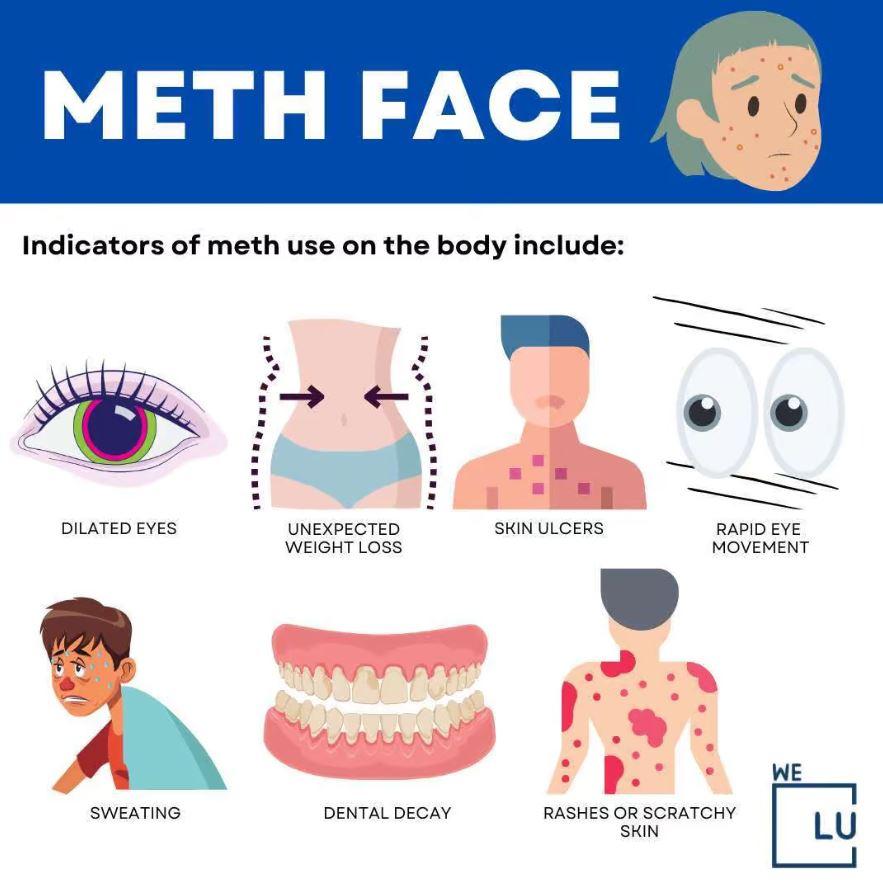
Meth Sores Images Gallery
What does meth sores look like? Meth users may display physical symptoms such as rapid weight loss, tooth decay (“meth mouth”), skin sores or lesions, dilated pupils, and an unkempt appearance. They may also exhibit psychological signs such as increased agitation, anxiety, paranoia, mood swings, and difficulty concentrating.
Behavioral indicators can include a decline in personal hygiene, social withdrawal, financial difficulties, changes in sleep patterns, and a preoccupation with obtaining and using methamphetamine. It’s crucial to approach the topic with empathy and understanding while encouraging individuals displaying these signs to seek professional help and support for addiction treatment.
The pics of meth sores above are courtesy of publically made available sheriff’s department arrest photo files from individuals suffering from addiction to meth. Here the meth sore pics clearly show the horrific impact of before and after meth addiction.
Images of Meth Sores on Arms
Why does meth cause sores? Aside from the hallucinations that methamphetamine can cause, there is an increased risk of infections at the meth injection sites. When individuals inject methamphetamine, they introduce bacteria and other contaminants into their bloodstream, increasing the risk of infection.
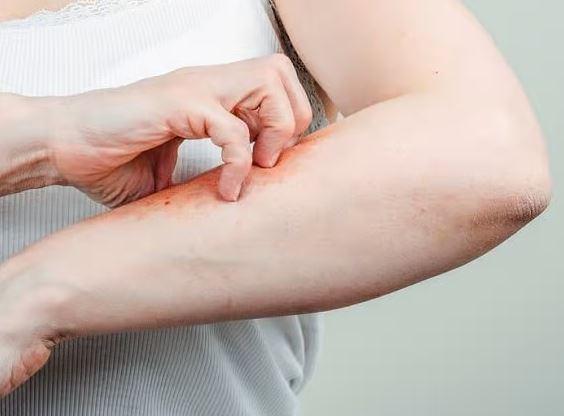
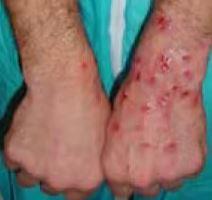
Why Do Meth Addicts Have Sores?
Meth users can develop sores for several reasons associated with their drug use and the lifestyle often accompanying addiction.
- Skin Picking and Scratching: Methamphetamine use can cause intense itching and a hallucinated sensation of bugs crawling under the skin, known as “formication.” Meth addicts may compulsively pick or scratch their skin in response to these sensations, forming open wounds, scabs, and sores.
- Poor Hygiene: Meth addiction can lead to neglect of personal hygiene, including inadequate bathing and cleanliness.
- Reduced Immunity: Methamphetamine weakens the immune system, making individuals more susceptible to infections. Sores on the skin can become infected, leading to further complications and delayed healing.
- Injection Drug Use: Some meth addicts may administer the drug through injection, which can introduce bacteria and other contaminants into the body. This can lead to skin infections and meth sores at injection sites.
- Nutritional Deficiencies: Methamphetamine use often suppresses appetite and can result in poor nutrition and dehydration. Nutritional deficiencies weaken the body’s ability to heal wounds and can contribute to the development of sores.
How To Treat Meth Sores?
Treating meth sores involves a combination of proper wound care and addressing the underlying methamphetamine addiction. Seeking professional medical help is crucial for proper evaluation and treatment. Healthcare professionals can guide wound care, prescribe appropriate medications, and support addiction treatment. Treating the underlying methamphetamine addiction through counseling, rehabilitation programs, and support groups is essential to break the cycle of addiction and prevent the further development of meth sores arms, meth sores face, and other parts of the body.
Crystal Meth Sores Fact Sheet
Symptoms of Sores From Crystal Meth
Methamphetamine, known as crystal meth, is a highly habit-forming stimulant drug affecting the central nervous system. It increases the release and blocks the reuptake of dopamine, a neurotransmitter correlated with pleasure and reward, leading to euphoria and increased energy.
Meth sores can appear as tiny, oblong red areas on your skin. Sores on face from meth are frequently mistaken for a rash or acne. Heavy meth use leads to the development of meth sores. When sores are prone to appear, there are additional indications of meth usage, such as:
- Weight loss.
- Paranoia.
- Hallucinations.
- Cognitive decline.
- Aggressive behavior.
- Being easily distracted.
- Tooth and gum decay.
- Changes in brain structure.
Meth sores might initially resemble any other sore, such as a typical cold sore. Even some individuals compare how meth sores appear on the face to acne. But, if meth addiction is present, any open sores that develop on specific areas of the face or body are probably caused by meth use.
They pick and scratch at meth sores because they are so uncomfortable. When this occurs, they more closely resemble an open sore and are more susceptible to infection. A pus-filled blister may form on an infected lesion. The sores can turn brown and scab over as they recover.
Understanding Crystal Meth Addiction
Crystal meth addiction is characterized by an overwhelming urge to seek and use the drug despite its negative consequences on various aspects of life, including physical and mental health, relationships, and overall well-being.
The effects of meth addiction can be devastating. Physically, it can cause rapid weight loss, dental problems (such as “meth mouth”), skin sores, and a decline in overall health. Psychologically, it can increase irritability, anxiety, paranoia, and even psychosis. Chronic methamphetamine use can also result in long-term cognitive impairments.
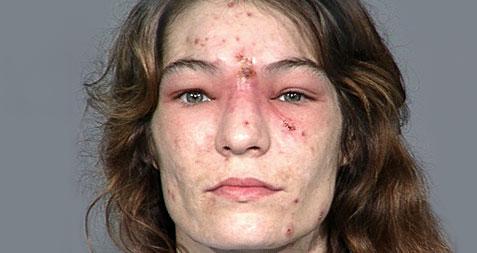
Treating meth and crystal meth addiction typically involves a comprehensive approach that combines medical, psychological, and social interventions. It may include detoxification to manage withdrawal symptoms, behavioral therapies to address underlying issues and change addictive behaviors, support groups, and ongoing aftercare to prevent relapse and support recovery.

Get Your Life Back
Find Hope & Recovery. Get Safe Comfortable Detox, Addiction Rehab & Dual Diagnosis High-Quality Care.
Hotline(844) 597-1011Related Statistics With Meth Addict Sores
Meth users face a range of problems that can significantly impact their lives. Methamphetamine is readily available in many parts of the US. Illicit production occurs domestically and internationally, with “superlabs” in Mexico being a significant source. Local clandestine labs also contribute to the production and distribution of methamphetamine.
The production, distribution, and use of methamphetamine often involve criminal activity. This includes drug trafficking, involvement in illicit drug markets, property crimes, and violence associated with the drug trade. These issues not only affect the individual but also strain families and place a burden on healthcare and social support systems.
16,167
Methamphetamine-involved overdose deaths increased from 1,388 deaths in 2010 to 16,167 deaths in 2019.
Source: CDC
160,000
In 2019, roughly 160,000 individuals sought treatment for methamphetamine use disorder, accounting for about 9% of all substance use disorder treatment admissions.
Source: SAMHSA
1.6 Million
In 2019, approximately 1.6 million US citizens aged 12 or older reported using meth in the past year.
Source: NSDUH
Get Help. Get Better. Get Your Life Back.
Searching for Accredited Drug and Alcohol Rehab Centers Near You?
Even if you have failed previously and relapsed, or are in the middle of a difficult crisis, we stand ready to support you. Our trusted behavioral health specialists will not give up on you. When you feel ready or just want someone to speak to about therapy alternatives to change your life call us. Even if we cannot assist you, we will lead you to wherever you can get support. There is no obligation. Call our hotline today.
(844) 597-1011Treating Infected Meth Sores
Treating infected meth sores requires proper medical attention and care. Here are some steps commonly involved in effective meth sores treatment:
- Seek Medical Help: It is crucial to consult professional healthcare for proper assessment and treatment of infected meth sores. They can assess the severity of the infection and provide appropriate medical advice.
- Cleaning and Dressing the Wound: The healthcare professional may clean the infected sore by gently rinsing it with a sterile solution. They may also remove any dead or infected tissue. After cleaning, they will apply an appropriate dressing to promote healing and prevent further infection.
- Antibiotics: Depending on the severity of the meth sores infection, the healthcare professional may prescribe antibiotics to fight the bacterial infection. It is crucial to take the prescribed medication as directed and complete the entire course of treatment.
- Pain Management: If the infected sore is painful, the healthcare professional may recommend pain relievers or medication to manage discomfort during healing.
- Follow-up Care: Following the healthcare professional’s instructions regarding wound care, dressing changes, and medication usage is essential. Attend scheduled follow-up appointments to monitor the progress of the healing process and ensure proper recovery.
Alongside treating the infected sores, addressing the underlying methamphetamine addiction is crucial for long-term recovery and preventing the recurrence of sores. Seeking addiction treatment, such as counseling, rehabilitation programs, and support groups, can provide the necessary support and resources to overcome meth addiction and improve overall health and well-being.
First-class Facilities & Amenities
World-class High-Quality Addiction & Mental Health Rehabilitation Treatment
Rehab Centers TourRenowned Addiction Centers. Serene Private Facilities. Inpatient rehab programs vary.
Addiction Helpline(844) 597-1011Proven recovery success experience, backed by a Team w/ History of:
15+
Years of Unified Experience
100s
5-Star Reviews Across Our Centers
10K
Recovery Success Stories Across Our Network
- Low Patient to Therapist Ratio
- Onsite Medical Detox Center
- Comprehensive Dual-Diagnosis Treatment
- Complimentary Family & Alumni Programs
- Coaching, Recovery & Personal Development Events
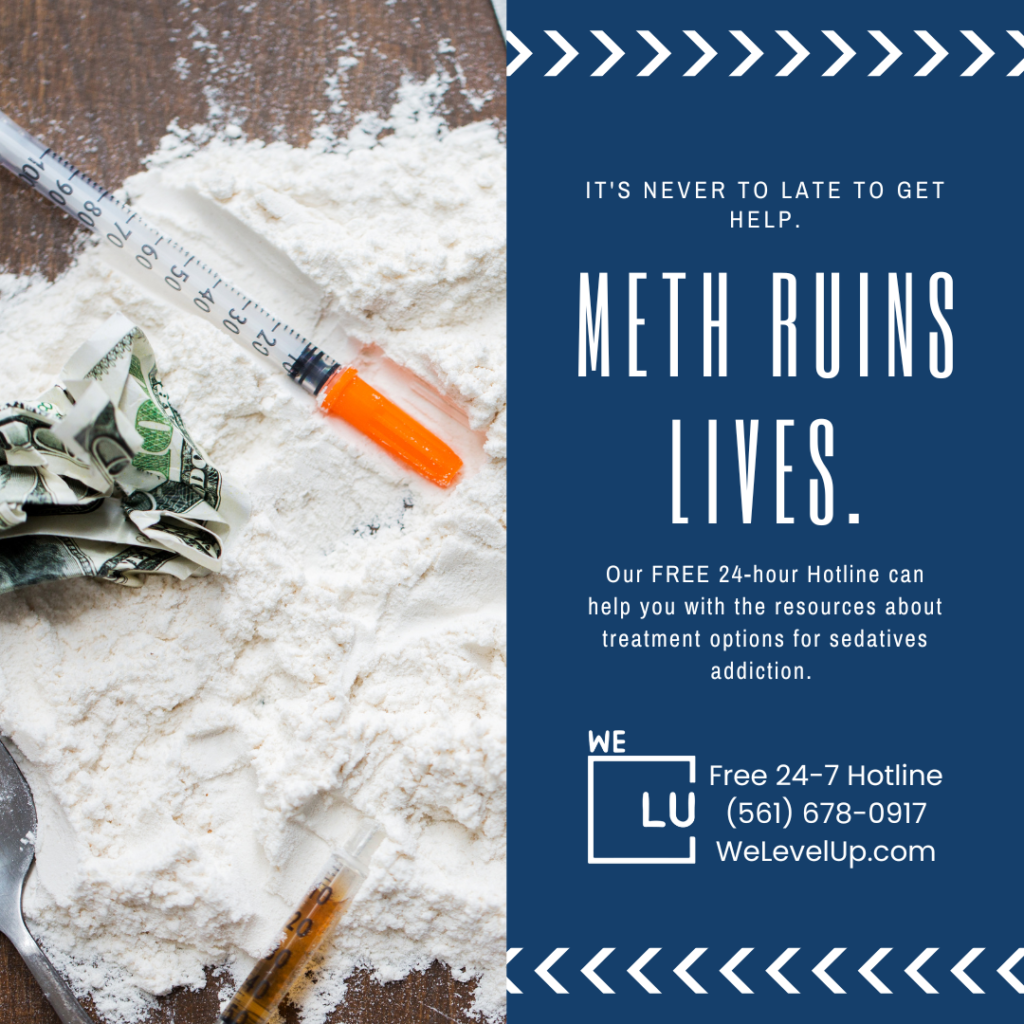
Treatment for Meth Sores on Body and Meth Addiction
Treating meth sores on the body and addressing meth addiction typically involves a comprehensive approach. Addressing meth addiction is crucial for long-term recovery. This may involve enrolling in an addiction treatment program that includes counseling, behavioral therapies, and support groups to address the underlying causes and develop coping strategies.
If the person is physically dependent on meth, a medically supervised detoxification process may be necessary to manage withdrawal symptoms and safely eliminate the drug from the body.
Seek a medical evaluation from a healthcare professional to assess the extent of the meth sores, check for any underlying infections, and determine the appropriate treatment plan. Contact We Level Up drug addiction treatment center for more information and support options.
World-class, Accredited, 5-Star Reviewed, Effective Addiction & Mental Health Programs. Complete Behavioral Health Inpatient Rehab, Detox plus Co-occuring Disorders Therapy.
CALL(844) 597-1011End the Addiction Pain. End the Emotional Rollercoaster. Get Your Life Back. Start Drug, Alcohol & Dual Diagnosis Mental Health Treatment Now. Get Free No-obligation Guidance by Substance Abuse Specialists Who Understand Addiction & Mental Health Recovery & Know How to Help.
Top 3 Why Do Meth Users Have Sores? FAQs
-
What causes meth mouth sores?
Methamphetamine reduces saliva production, leading to dry mouth, heightening the risk of tooth decay, gum disease, and oral sores. The drug also causes bruxism, or teeth grinding, which damages tooth enamel and contributes to sores and ulcers. Poor oral hygiene practices, often associated with meth use, further worsen oral health, while nutritional deficiencies weaken the immune system and impair healing. Furthermore, the acidic nature of methamphetamine can erode tooth enamel, resulting in dental decay and painful mouth sores. Overall, the cumulative effects of dry mouth, teeth grinding, poor oral hygiene, nutritional deficiencies, and the chemical properties of the drug contribute to the occurrence of meth mouth sores.
-
How to heal meth sores?
First, dry the affected areas by gently washing the sores with mild soap and water. Avoid picking or scratching the sores, as this can worsen the condition and heighten the risk of infection. Applying topical antibiotic ointments recommended by a healthcare professional can help prevent infections. Good oral hygiene, including brushing teeth and flossing regularly, promotes healing. Moreover, seek professional medical advice to assess the severity of the sores and determine if any specialized wound treatments or interventions are needed. It’s crucial to address the underlying meth addiction through professional help and rehabilitation programs to ensure long-term recovery and prevent the further development of meth sores.
-
How to get rid of meth sores?
Getting rid of meth sores involves a multi-faceted approach. Seeking professional medical help is crucial for assessing the severity of the sores and determining if additional treatments or interventions are necessary. Addressing the underlying methamphetamine addiction through professional assistance and rehabilitation programs is vital to prevent the recurrence of meth sores and promote overall recovery.
Faces of Meth Before and After Images Devastating Effects w/ Meth Face, Meth Mouth, and Meth Sores
Methamphetamine can have severe physical effects on a person’s appearance. Skin problems such as acne, sores, and severe itching are common due to the drug’s impact on blood vessels and reduced self-care. Meth users often experience rapid weight loss and a gaunt, skeletal appearance due to suppressed appetite and increased metabolism.
Dental decay, known as “meth mouth,” is prevalent and characterized by rotting teeth, gum disease, and tooth loss caused by dry mouth and poor oral hygiene. Meth can also lead to hair loss, thinning, and a dull, brittle texture. Lastly, the drug’s vasoconstrictive properties can cause a pale complexion, increased wrinkles, and premature aging.
If you or a loved one is struggling with meth addiction or other substance use disorder(s), call for a FREE consultation 24/7 at (561) 678-0917
Treating meth head sores requires a comprehensive approach that addresses the condition’s physical and psychological aspects. Addressing the underlying addiction is crucial for long-term recovery. Encourage the individual to seek professional help, such as entering a rehabilitation program that provides comprehensive support, counseling, and guidance to overcome methamphetamine addiction.
Get FREE addiction treatment insurance check – https://welevelup.com/rehab-insurance/
Faces of Meth Before and After Images Video Transcript
The face of meth is a term for the decline in the facial physical appearance of many meth users. Disfiguring faces of meth before and after photos show the incredible damage caused by meth abuse. Uncover the side effects of meth, signs, symptoms, and meth addiction treatment options. Learn about meth mouth tooth decay risks.
The “Faces of Meth” project was first introduced by the Multnomah County Sheriff’s Office in Portland, Oregon, in 2004. The idea behind the project was to educate the public, particularly young people, about the dangers of methamphetamine use and its potential consequences.
The photos used in the project are often shocking, as they depict individuals who have lost teeth, aged prematurely, and suffered from severe skin problems due to their drug use. Methamphetamine is a highly addictive drug that can cause many physical and mental health problems, including heart problems, increased risk of stroke, paranoia, and hallucinations.
The “Faces of Meth” project has successfully generated widespread attention and raised awareness about the harmful effects of methamphetamine use. The campaign has also been adopted by other law enforcement agencies and organizations across the country and around the world.
In addition to the images, the “Faces of Meth” campaign also features resources and information for those struggling with methamphetamine and other drug addiction, including treatment options and support groups. The project’s ultimate goal is to help prevent and reduce the harm caused by methamphetamine abuse and encourage people to seek help if they or someone they know is struggling with addiction.
Experience Transformative Recovery at We Level Up Treatment Centers.
See our authentic success stories. Get inspired. Get the help you deserve.
Start a New Life
Begin with a free call to an addiction & behavioral health treatment advisor. Learn more about our dual-diagnosis programs. The We Level Up Treatment Center Network delivers recovery programs that vary by each treatment facility. Call to learn more.
- Personalized Care
- Caring Accountable Staff
- World-class Amenities
- Licensed & Accredited
- Renowned w/ 100s 5-Star Reviews
We’ll Call You
Meth Sores Video
Meth sores, or methamphetamine-induced skin lesions, are painful, infected sores that commonly appear on the face, arms, and legs. Discover the visible signs of methamphetamine’s impact on the skin, from small red bumps to larger crusted lesions.
Search We Level Up Meth Sores Treatment, Meth Detox, Mental Health Topics & Resources
Sources
[1] National Institute on Drug Abuse (NIDA) – Methamphetamine: https://www.drugabuse.gov/drug-topics/methamphetamine
[2] Centers for Disease Control and Prevention (CDC) – Meth Mouth: https://www.cdc.gov/
[3] Substance Abuse and Mental Health Services Administration (SAMHSA) – Methamphetamine Use and its Effects: https://www.samhsa.gov/
[4] National Institute of Dental and Craniofacial Research (NIDCR) – Methamphetamine Abuse and Dentistry: https://www.nidcr.nih.gov/
[5] Office of National Drug Control Policy (ONDCP) – Methamphetamine: https://www.whitehouse.gov/methamphetamine/
[6] National Library of Medicine – Methamphetamine: https://medlineplus.gov/methamphetamine.html
[7] US Department of Justice – Methamphetamine: https://www.justice.gov/
[8] US Department of Health and Human Services – Methamphetamine: https://www.hhs.gov/ash/oah/adolescent-development/substance-use/drugs/stimulants/methamphetamine/index.html
[9] National Criminal Justice Reference Service – Methamphetamine: https://www.ncjrs.gov/ondcppubs/publications/policy/ndcs03/chapter6.html
[10] US Drug Enforcement Administration (DEA) – Methamphetamine: https://www.dea.gov/



